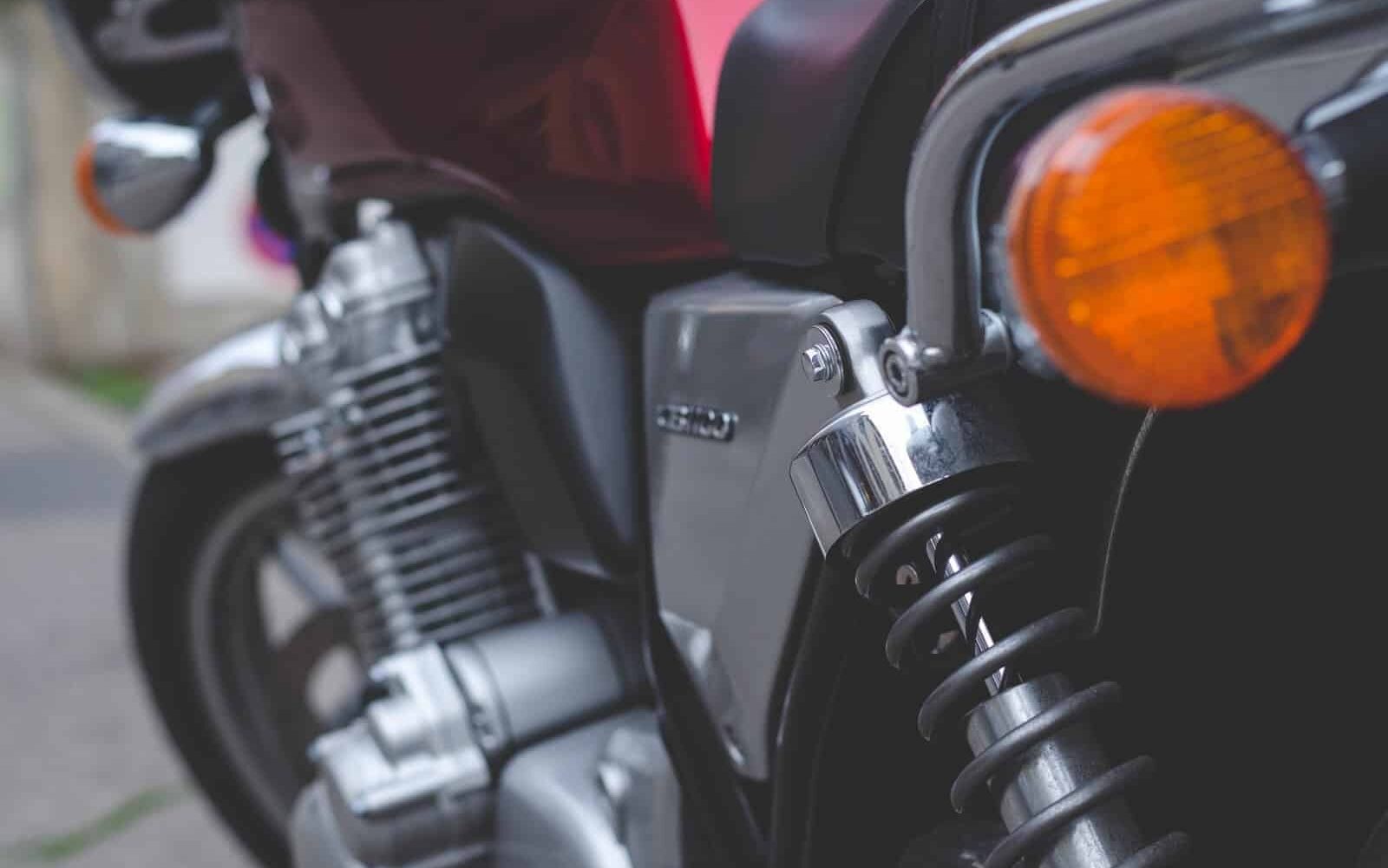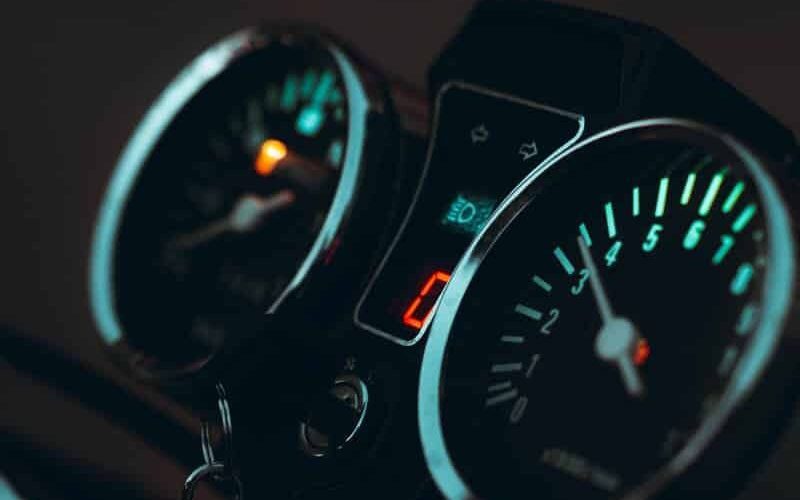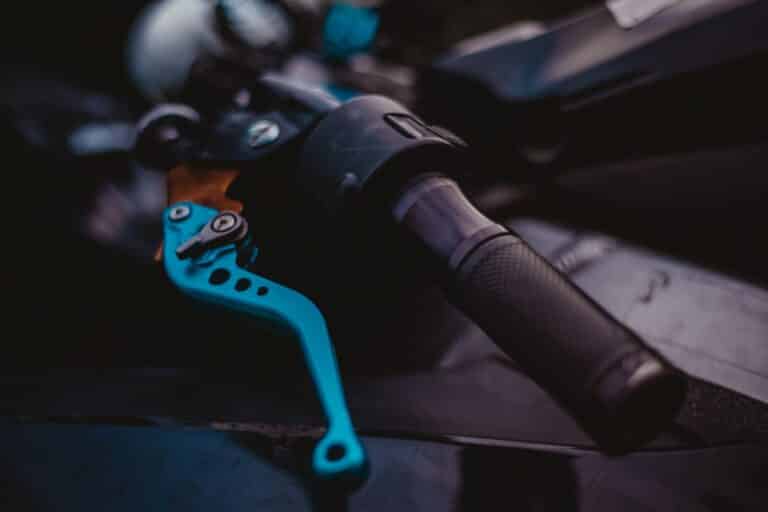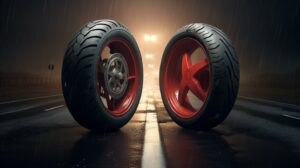Those getting into motorcycles will notice there are 3 different ways of braking, front brakes, rear brakes, and engine braking. Everyone who’s driven a manual car understands the concept of engine braking. And engine braking on a motorcycle is no different.
Motorcycle engine braking is when you use the engine to slow the motorcycle down instead of just the brakes. When done correctly, it can be very effective at slowing the bike down with minimal input from the brake lever. Brake pads are often connected to brake lights and engine rpm directly. The motorcycle engine, rear brake pedal, rear tire, slipper clutch, clutch lever and appropriate gear affect the engine speed of the motorcycle.
However, there are a few things you should know about engine braking before you start using it. And there are distinct pros and cons to brake pads on a motorcycle.
Let’s get into it!
How to perform motorcycle engine braking?

Applying engine brake is as simple as it sounds, you will use the engine to slow the motorcycle down.
There are a few ways to do this though:
- Off throttle
- Clutch in
- Shift into a lower gear
- Clutch out
- Let your motorcycle’s engine do the work to slow down the bike
The general idea of the engine brake, regardless of how it’s performed, is that you’ll pull in the clutch with your left hand and then cut the throttle with your right hand. This will allow the engine to slow the bike down without the forward momentum of the wheels.
Is engine braking bad for my motorcycle?
Braking the engine won’t do any more damage than standard braking to your motorcycle. When you use brakes you are only wearing down your brake pads. However, while braking the engine you are using a few more parts that can wear down.
Firstly, if you are braking enough in one gear, then the clutch plates inside of the transmission will start to overheat and warp. However, this isn’t much of an issue when it comes to motorcycles because their clutches are designed to take a beating.
Secondly, engine braking can also cause the rear wheel to lock up. When this happens, the rear wheel will skid and you’ll lose control of the bike.
So, while engine braking is a great way to slow your bike down, it’s important to use it in moderation. Don’t rely on it too much or you’ll put unnecessary wear on your clutch plates and rear wheel.
How do I know when to use engine braking?

Well, that depends on what you’re doing with the motorcycle. Anytime that you need to slow down, then feel free to apply a brake on the engine. But don’t start using it right away, wait until you really need it.
For example, if your motorcycle is going at the speed limit and you want to go slower, then engine braking isn’t needed. You can just use the brake lever.
Engine braking really comes into play when you need to slow down quickly or stop completely. Like if a car pulls out in front of you right as you’re approaching an intersection. In this case, engine braking can be one of your best friends, allowing you to stop quickly and safely.
What is the Difference Between Trail Braking and Motorcycle Engine Braking?
Trail braking is a technique used in motorcycle racing to maintain control while entering corners at high speeds. By applying the brakes and gradually releasing them while turning, the rider transfers weight to the front tire, improving grip. Motorcycle engine braking, on the other hand, is the deceleration caused by reducing throttle input without using the brakes. Unlike trail braking, which involves braking while turning, engine braking is a natural function of a motorcycle’s engine and can help control speed and stabilize the bike during cornering. Understanding the differences between these two techniques is crucial for riders seeking optimal control and performance on the track. So, what is trail braking? It’s a skillful maneuver to master, while engine braking is a natural aspect of motorcycle mechanics.
Is it better to use the front or rear brake with engine braking?
it is always best to use engine braking in conjunction with both front and rear brakes. Do note that by engine braking your weight will shift forward a lot on the bike, so prioritizing the rear brake is probably best.
Is engine braking dangerous?
Engine braking isn’t dangerous in and of itself, but it can lead to loss of control if you’re not careful.
If you’re too heavy on the throttle and try to do an engine brake, then you risk locking up the rear wheel and sliding out. Think of it this way, when you perform an engine brake really quickly it’s the same as braking hard, quickly. This can be dangerous if you’ve just come off the throttle.
However, by slowly reducing the throttle over time through engine braking, then you won’t have any problems. This will allow you to safely slow down with your motorcycle.
Conclusion
Engine braking is a great tool to have. It can help you slow your motorcycle down quickly and safely. Just be careful when doing so, especially if you haven’t practised engine braking before. Because your weight really does shift forward, it is harder to modulate than your engine power & and you can slow down very quickly.
Of course keeping up with your motorcycle maintainence such as changing your brake fluid and bleeding your brakes will also help you brake faster without having to rely so much on engine braking.






